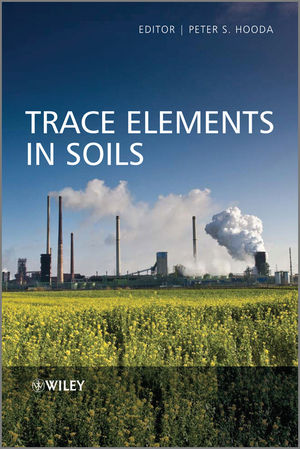Trace Elements in SoilsISBN: 978-1-4051-6037-7
Hardcover
616 pages
May 2010, Wiley-Blackwell
 This is a Print-on-Demand title. It will be printed specifically to fill your order. Please allow an additional 15-20 days delivery time. The book is not returnable.
|
||||||
As a result of their persistence and potential toxicity, trace elements continue to receive widespread scientific and legislative attention. Trace Elements in Soils reviews the latest research in the field, providing a comprehensive overview of the chemistry, analysis, fate and regulation of trace elements in soils, as well as remediation strategies for contaminated soil.
The book is divided into four sections:
• Basic principles, processes, sampling and analytical aspects: presents an overview including general soil chemistry, soil sampling, analysis, fractionation and speciation.
• Long-term issues, impacts and predictive modelling: reviews major sources of metal inputs, the impact on soil ecology, trace element deficient soils and chemical speciation modelling.
• Bioavailability, risk assessment and remediation: discusses bioavailability, regulatory limits and cleanup technology for contaminated soils including phytoremediation and trace element immobilization.
• Characteristics and behaviour of individual elements
Written as an authoritative guide for scientists working in soil science, geochemistry, environmental science and analytical chemistry, the book is also a valuable resource for professionals involved in land management, environmental planning, protection and regulation.



